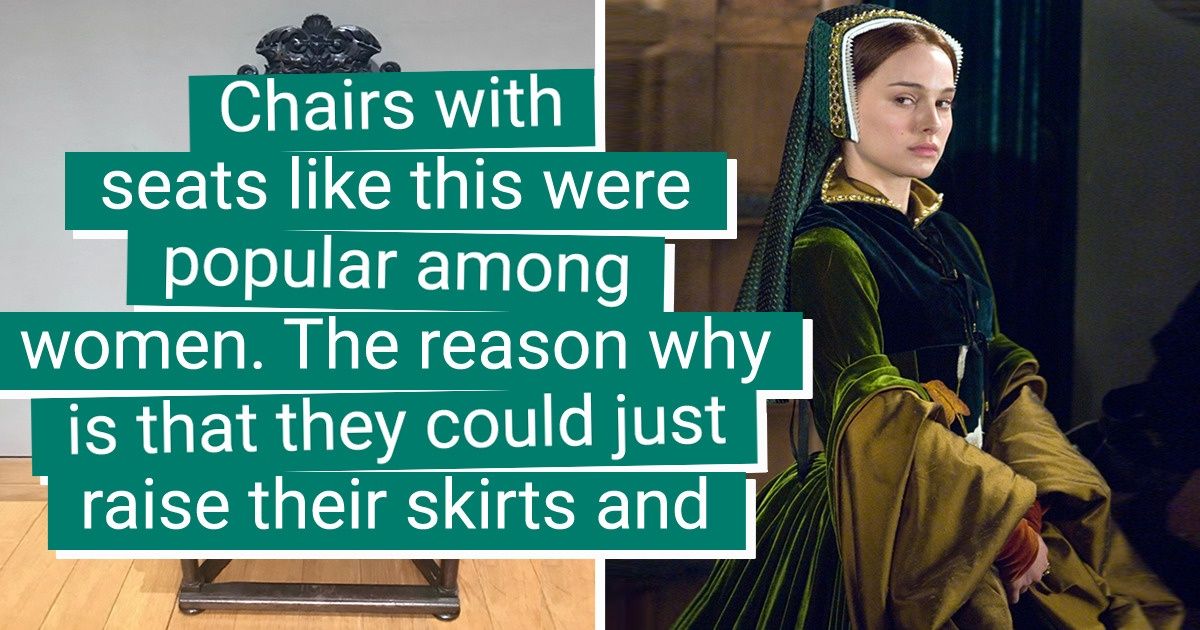20+ People Who Dreamed of Having a Delicious Meal, but the Chef’s Creativity Spoiled Their Appetite


The first “furniture” humans had were tree stumps, rocks, and mossy areas. Gradually people learned how to construct and make their own pieces of furniture. Ancient Egypt was a pioneer when it came to seating — producing the first chairs and stools. Later their knowledge was adopted by ancient Greece and ancient Rome who diversified interior items with thrones and couches.
The way furniture looks has changed over the centuries. At Bright Side, we would like to show you what ordinary pieces of furniture used to be like in the past.
The lower classes and servants would sleep on hard slabs with moss over them for some added softness. They didn’t have any blankets to cover themselves, so their coats were the only source of warmth. In some cases, they were allowed to sleep in the bedrooms of their bosses on straw pallets placed on the floor.
On the other hand, the upper class had nice cottage bedrooms with fires on to keep them warm. They had nice beds with soft and thin mattresses that were extremely expensive to get.
The French caquetoire chair (from the French word caqueter which means “to chat”), first appeared in the 16th century and referred to lightly built chairs. They had a narrow back, open arms, and trapezoid-shaped seats. The design of this chair allowed women to sit in comfort raising and spreading their wide skirts. It is difficult to know where they first appeared since we have French, Scottish, and Salisbury models that were built very close (timewise) to each other.
A cassone chest, used as a marriage chest, was the most nicely decorated piece of furniture during the Renaissance. It was intended to store the bride’s clothing, linen — everything that women usually used as a wedding dowry.
A dressoir was a 2- or 3-stage sideboard that had a prominent role in home decoration in the 16th century in France and the Netherlands. It was made of walnut or oak wood and had ornaments carved on them. They were usually put in a very central place inside upscale homes as a way to show off someone’s wealth. They were used to store multiple things, including silverware, ceramics, and linen.
In the past, braziers were widely used for heating living quarters. In Spain, for example, they remained one of the main means of heating until the 20th century. A brazier with dying embers was placed under the table, covered with a long piece of cloth, to keep the feet warm on cold winter evenings. Fortunately, technological development helped find safer ways to heat a room.
The bidet appeared in France in the 17th century and, for a long time, it stood next to a chamber pot in the bedroom. It wasn’t until the 20th century, when plumbing was improved, that the bidet was moved from the bedroom to the bathroom. Previously, the use of this item was believed to prevent pregnancy, so the bidet was considered to be not only a means of personal hygiene but also a contraceptive device (however, it was later proven ineffective).
Only wealthy people could afford a mirror. Therefore, in order to preserve this expensive item, they used to place it as high as possible and they even decorated it. And to make sure that you could look in the mirror, it was placed at an angle to the wall.
Besides, many superstitions were associated with mirrors, so it was considered a bad omen to not be able to see yourself fully. Therefore, mirrors were placed in such a way that you could see your whole self by looking upward.
Diphros is an Ancient Greek stool without a back and with 4 turned legs, which is the prototype for modern stools. The foldable version was widespread, which made the diphros very convenient to use. Even the gods on the Parthenon frieze were depicted sitting on diphroi.
The first wardrobes were separate storage rooms for robes, which began to appear in the palaces of kings and nobles. In the Victorian period, wardrobe doors became full-length, covering the drawers or shelves at the bottom, and mirrors were often added.
Portable toilets in the form of a chair or box appeared during the Middle Ages. Under the chair, there was a pot that had to be cleaned after someone used the toilet. The waste from the toilet would be thrown at a nearby pile of manure. It was absolutely prohibited to throw the waste on the street.
What pieces of furniture from the past do you have? Tell us in the comments below.











